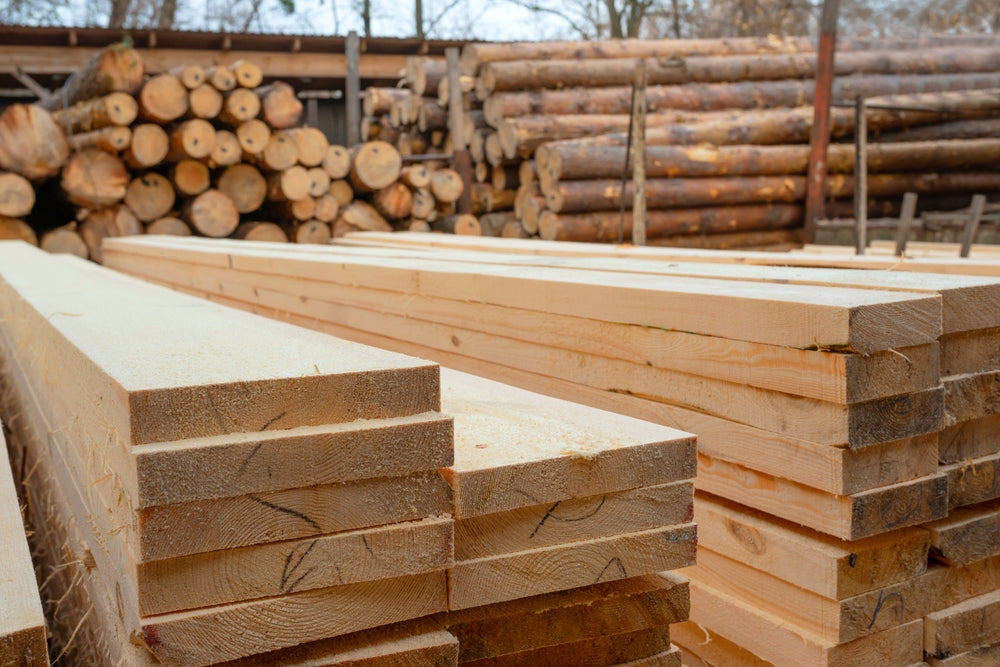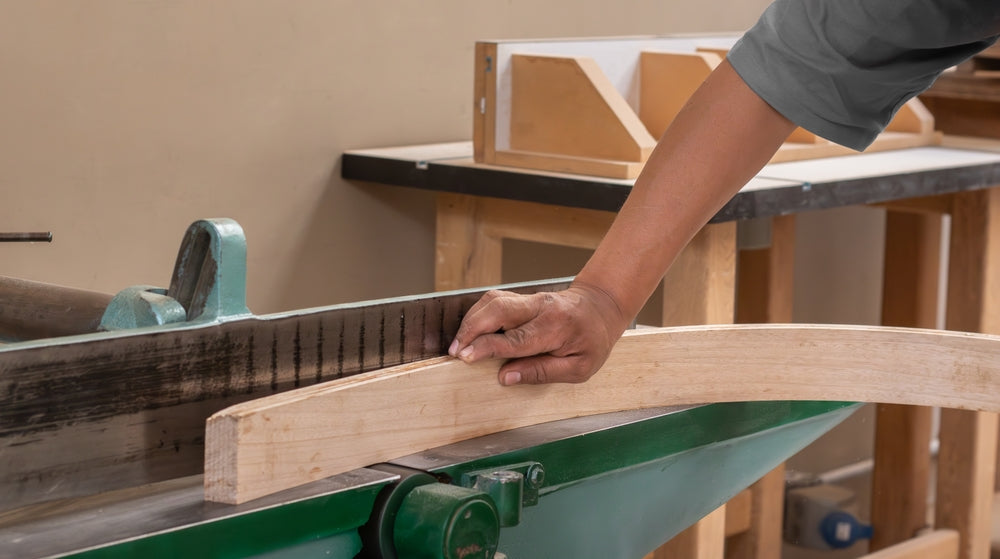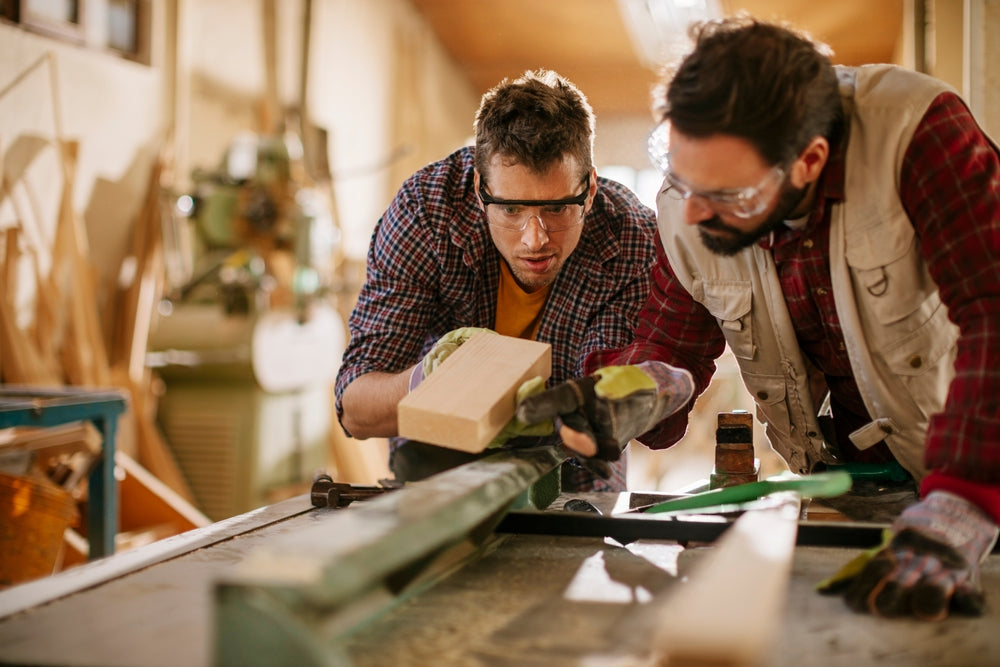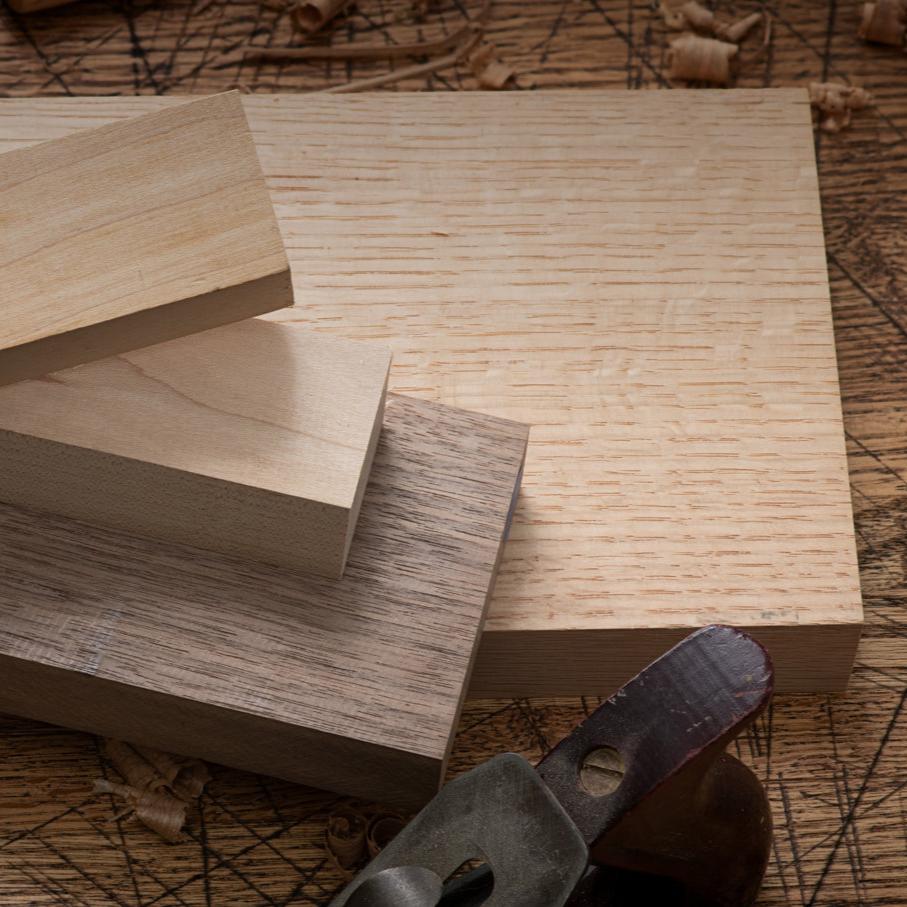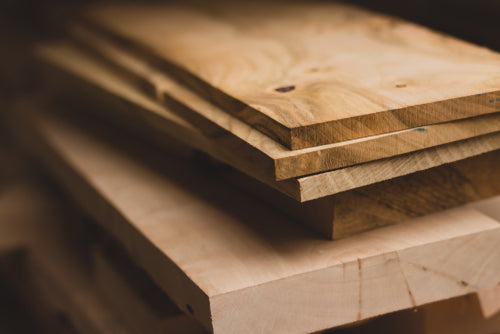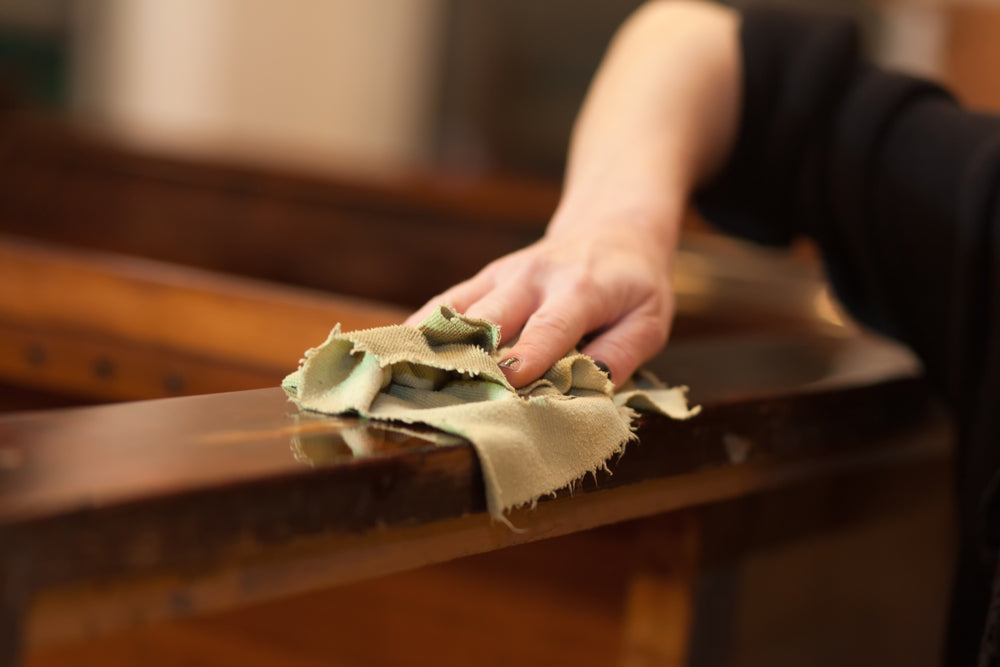Hardwood and softwood lumber have important differences that a skilled woodworker needs to understand – but telling them apart isn’t as simple as it seems. The defining factor that makes lumber a hardwood vs a softwood is what kind of tree it comes from – not how hard the wood is.
Hardwood trees typically have broad leaves that are shed in autumn. Their seeds are enclosed in protective fruits or nuts (e.g., acorns, cherries, or walnuts). Examples of hardwood trees used for lumber include white ash, red oak, white oak, and maple.
Softwood trees are usually evergreen, with needles or needle-like leaves and seeds enclosed in cones.
While hardwood lumber is often denser, heavier, and harder than softwood, there are exceptions. The hardness of a wood is measured with something called the Janka scale. White hard maple – one of the toughest North American hardwoods – has a Janka hardness score of 1450. Balsa wood is the softest commercially available lumber with a score of less than 100– but it comes from a hardwood tree.
What is the Difference Between Hardwood and Softwood Lumber?
There are several differences between hardwoods and softwoods. Hardwood comes from slow-growing deciduous trees that shed their leaves annually. Softwood lumber, on the other hand, is produced from fast-growing coniferous trees that do not shed their needle-like leaves when seasons change.
Although there are some exceptions, most hardwoods offer higher density, hardness, and durability than softwood. Hardwoods’ slow growth rate and more complex cell structure results in lumber with tightly spaced rings and more complex grain patterns, while softwood is typically lighter in color with a much more subtle grain pattern.
Due to their rapid growth and straight trunks, softwood species are ideal for commercial production and are the primary source of wood for rough construction. Hardwoods have numerous desirable qualities, but slow growth rates make them difficult to farm in the same manner as softwoods, creating scarcity that drives up prices.
Despite this, hardwoods are the material of choice for applications where strength and beauty are desired – like furniture, cabinets, crafts, and home interiors.
|
Hardwoods |
Softwoods |
||||
|
Harder |
Softer |
||||
|
Higher Density |
Lower Density |
||||
|
Grows Slowly |
Grows Rapidly |
||||
|
Complex Grain Patterns |
Simple Grain Patterns |
||||
|
Higher Cost |
Relatively Inexpensive |
||||
|
Uses: quality furniture, cabinetry, premium flooring, outdoor furniture, veneer, sporting goods, musical instruments |
Uses: construction and framing timbers, fencing, decking, cladding, flooring, rustic decoration |
What Types of Trees do Hardwood and Softwood Come From?
Hardwood lumber is derived from angiosperm trees, while softwood trees are gymnosperms. Angiosperms have broad leaves and produce flowers as part of their reproduction cycle. Oak and maple trees are familiar examples of angiosperms. Gymnosperm trees are evergreen conifers with needle-like leaves that are not shed in response to changing seasons. They also have exposed seeds and do not produce flowers. Fir, spruce, and pine trees are all examples of gymnosperms.
Strength and Durability
So, are hardwoods actually harder than softwoods, as their names suggest? The answer is yes, most of the time. Hardwoods generally offer higher hardness than softwoods do.
However, exceptions do exist and not all hardwood species are necessarily harder than all softwood species. In fact, hardwoods such as balsam poplar and yellow buckeye make the list of the top 10 softest available woods compiled by Wood Database. Meanwhile, exceptional softwoods like yew are harder than many hardwoods.
Hardness in wood is measured according to the Janka hardness test, which describes the amount of force required to halfway embed a roughly half-inch diameter ball into a piece of wood. According to data published by the USDA Forest Products Laboratory's Wood Handbook, hardwoods white oak and white ash have hardness values of 1360 and 1320 lbs of force, respectively. Softwoods loblolly pine and western red cedar have much lower hardness values of 690 and 350 pounds of force.
Density and Hardness
Density mirrors hardness in wood because the two properties are linked. So hardwoods tend to be more dense than softwoods. According to the Wood Handbook, commercially important hardwoods like oak, white ash, and hard maple (sugar maple) range in density from 36.8 to 42.4 pounds per cubic foot.
Softwoods such as pine, spruce and cedar range in density from 19.3 to 36.8 pounds per cubic foot. Of course, the previously mentioned exceptions yew and balsa defy this rule of thumb with densities of 44.3 and 9.4 pounds per cubic foot, respectively.
Physical Characteristics and Appearance
One of the most important differences between hardwood and softwood is appearance. When a log is cut, its growth rings are exposed on the face of the resulting lumber and produce a certain grain pattern that depends on their distribution. Hardwood trees generally have tightly spaced rings due to their slow growth rates. Softwoods, on the other hand, grow rapidly and usually have more defined rings with wider spacing.
Grain patterns are also affected by the wood’s cellular structure. Hardwood trees transport water throughout their structure with tube-like vessels, which produce openings called pores when a log is cut. Visible pores contribute significantly to the grain pattern of a hardwood board - larger pores create a coarse but bold grain, while small pores result in a more subtle or even appearance. Red oak is an example of a porous hardwood. Softwood trees have no vessels and therefore no pores, which produces a much simpler grain pattern.
Knots and Character
Knots are formed when a branch intersects a tree’s trunk, disturbing the direction of the wood’s fibers and therefore its grain. Both hardwoods and softwoods can produce knotted lumber, but softwood generally has more defects. Wood without knots is referred to as clear or clear-grained, and is typically considered more valuable because knots reduce strength. A single log can produce both clear and knotted lumber.
While hardwood has fewer knots than softwood, it can have figure or other character. Grain patterns such as wavy, curly, flame, or bird's-eye are found in some maple and other species. Hardwood can also have mineral streaks.
At North Castle Hardwoods, we guarantee our hardwood dimensional lumber boards to be almost completely defect-free on one face.
Color
Generally, softwood tends to have lighter natural coloring than hardwood - with a few exceptions. Western red cedar and redwood are both notable softwoods with an attractive red hue, while ash and white maple are hardwoods valued for their bright, creamy colors.
Overall, though, common softwoods tend to be pale in color with many species having a yellowish tint. This is especially true for the widely available pine species that fill the racks of home improvement stores. Hardwoods tend to occupy the darker end of the wood color spectrum, including the signature rich hues of walnut and cherry.
How to Tell Hardwood and Softwood Apart
Unfortunately, there is no simple trick to visually tell if an unknown board is softwood or hardwood. Instead, it is best to consider all of the previously mentioned qualities of both wood types. If the board in question is lightweight, pale in color, and has a simple or muted grain, it is likely softwood. If possible, compare the board to another sample of known wood for reference.
Cost and Availability
Hardwood lumber is sourced from slow-growing deciduous trees that cannot be easily farmed. In years past, the demand was supplied primarily by felling old-growth forests until those unsustainable harvesting practices created scarcity that increased cost. While modern initiatives have made progress toward correcting this issue, hardwood lumber is still less abundant and more costly to produce than softwood. North Castle Hardwoods is committed to supplying only responsibly sourced hardwood lumber from select North American growing regions.
Softwood trees tend to have straight trunks that don’t fork into major branches, making them ideal for producing long, straight pieces of lumber. Plus, softwoods’ rapid growth rates allow for quick production by timber farms. As a result, lumber from softwood trees is more abundant and less expensive than that of their hardwood counterparts.
Big-box home improvement stores stock far more softwood (usually pine) than hardwood, so woodworkers seeking hardwood lumber usually rely on specialty wood stores and mills. Ordering from a specialty hardwood lumber supplier is the only way to ensure you’re getting meticulously graded, sustainable, top-quality lumber that will perform to your expectations.
Common Uses of Softwood vs. Hardwood
What is Softwood Used For?
Softwood lumber is abundant and inexpensive, making it the wood of choice for construction projects. Common applications of softwood lumber species like pine and cedar include timber framed buildings, fencing, decking, and more. Softwood is also a major source of wood for processed wood products like paper, plywood, and medium-density fiberboard (MDF).
According to statistics published by the USDA, softwood accounted for 80% of U.S. lumber production in 2017, continuing a long-standing trend in the lumber market.
What is Hardwood Used For?
Despite their strength and durability, hardwoods are rarely used for structural construction applications because of their expense and limited supply. However, these properties mean that they are still highly valuable for small to medium projects where less lumber is required. Strong, dense species like white oak, walnut, and ash are widely used for furniture, musical instruments, and even sporting goods.
Tropical hardwoods like teak and ipe are admired for their natural rot and insect resistance. These woods are superb options for outdoor furniture and decking. They have also long been valued by boat builders for their longevity in the harsh marine environment.
Decorative hardwoods may not boast the same strength as other species, but their beauty is undeniable. Woods like cherry, walnut, and mahogany are valued for their striking appearances and are often used for cabinetry and luxury furniture. Many hardwoods with desirable grain patterns are used to produce veneer - a type of wood product that consists of a paper-thin layer of wood bonded to a paper backing. Hardwood veneer can be glued over a less attractive wooden panel to produce a beautiful finish at a lower price.
Conclusion
The difference between softwood and hardwood is complex but important. The success of any woodworking project - from a building wall to a rocking chair - depends on choosing the right wood. Most hardwoods offer greater strength, hardness, and durability than softwoods, making them ideal for a broad range of projects. Whether you need stout white oak, decorative cherry, or striking black walnut, North Castle Hardwoods is the perfect source for premium quality hardwood lumber to meet your needs.
About the Author
 Josh Kou is the operations manager at North Castle Hardwoods. As a second-generation lumberman, he's the go-to guy for your woodworking questions. Read more about Josh.
Josh Kou is the operations manager at North Castle Hardwoods. As a second-generation lumberman, he's the go-to guy for your woodworking questions. Read more about Josh.
